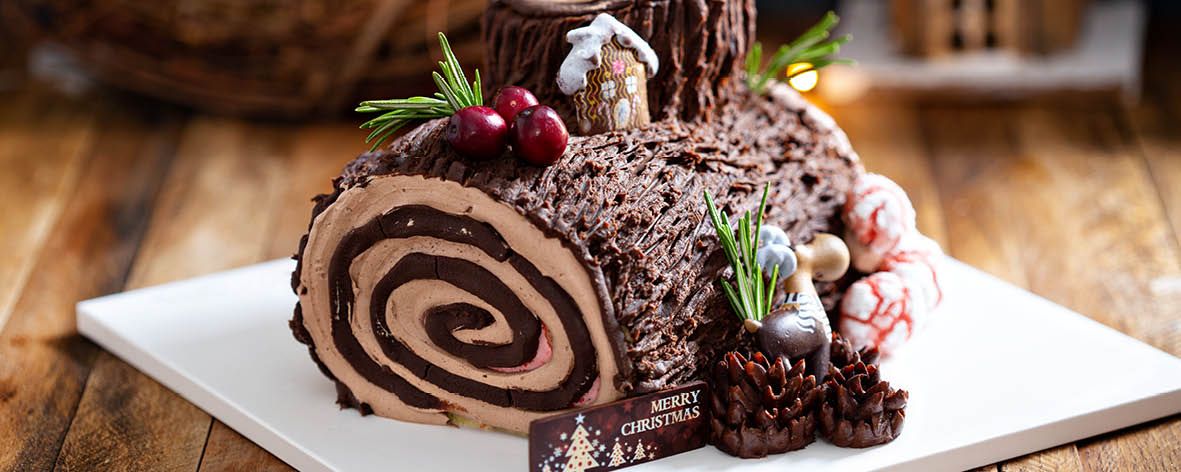La Bûche de Noël … a Christmas tradition

What do pavlova, cheesecake and trifle have in common? The answer is easy; they’re staple desserts of an Australian Christmas. Other countries also have favourite Christmas desserts and some of them have spread from their country of origin to become popular around the world. Arguably one of the most famous of these is the Bûche de Noël. Originating in France, this popular log-shaped sponge cake is also known as a Yule Log, and it is steeped in history.
It is thought that the Bûche de Noël comes from an ancient Celtic tradition of finding a large tree log and burning it on the shortest day of the year, in celebration of the Winter Solstice. In medieval France a Christmas feudal tax required peasants to bring a large log of wood to the manor house of the feudal lord. Later they began collecting a large log for their own home. They would bless the log, decorate it with ribbons and then burn it and enjoy the warmth of the large log for days.
There were different Bûche de Noël traditions in different regions of France. In Provence, the remains of the previous years log was used to start the fire for the new log. In Burgundy parents would hide gifts for their children under the log while in Brittany the youngest and oldest members of the family had the honour of lighting the log. The log was believed to hold magical powers and it was used to forecast events for the coming year. Embers, sparks and flames were used to predict the health and wealth of the family for the new year. It was believed that a shadow cast on the wall by the fire meant that there would be a death in the family. Ash from the log was sprinkled around chicken coops to stop foxes and added to the soil to produce a good harvest.
The yule log customs continued into the 19th century but as hearths became smaller and eventually were replaced with stoves, the large yule log was replaced by a smaller branch that was placed on the Christmas table and surrounded with small treats to share with family and guests. There are varying theories about the evolution from an actual log to a cake including that the cake was invented to replace the log in homes where there were not fireplaces. Another popular story is that Napoleon 1 mandated that chimneys must be closed during the winter months to stop illness. With chimneys closed a Parisian baker created a cake version of the yule log.
La Bûche de Noël began appearing in recipe books in the 1890s. The traditional recipe features a rolled light sponge cake, filled with cream or buttercream and covered with chocolate gananche. It is shaped and decorated to resemble a log. Decorations include sugared fruit, meringue mushrooms, lollies and greenery.

